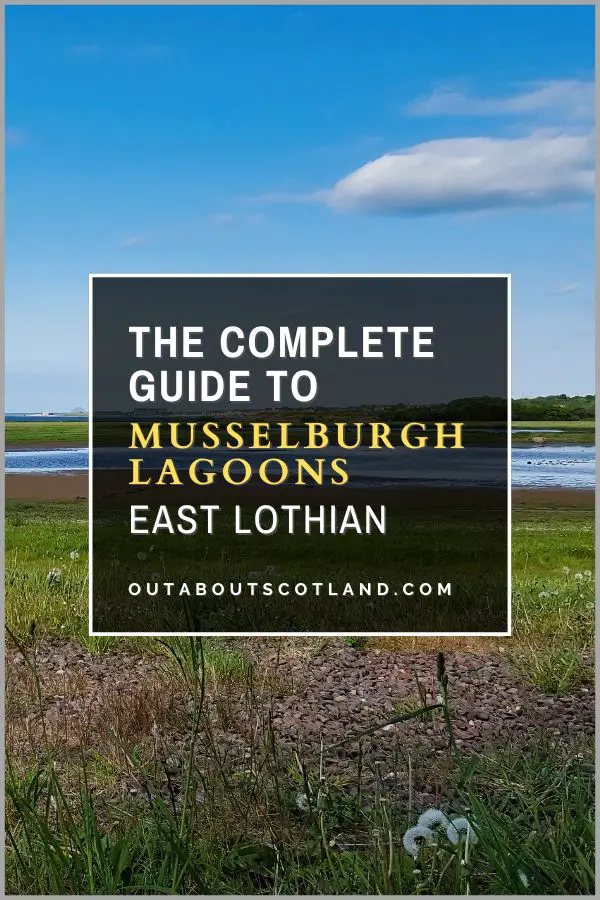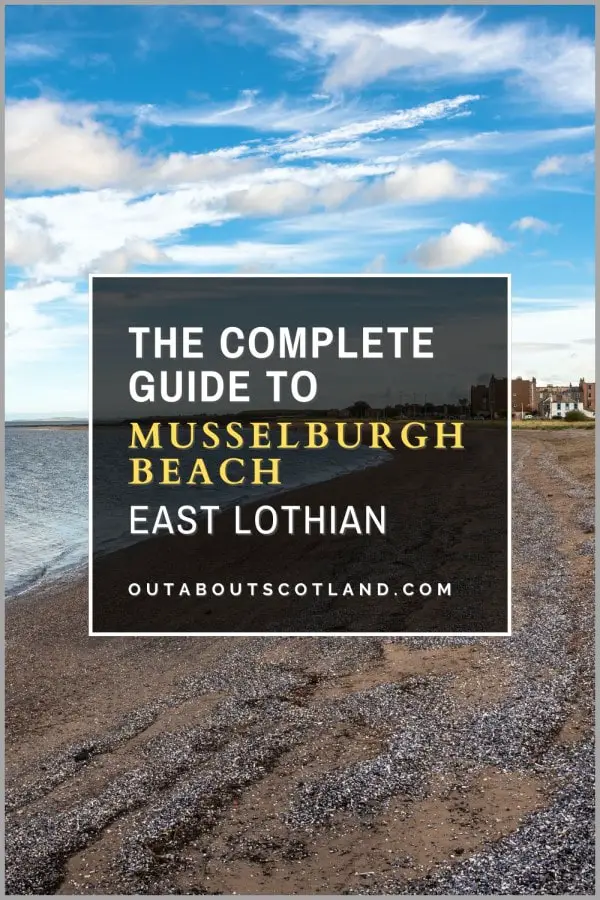Torness Power Station is a nuclear facility in East Lothian that’s operated by EDF Energy and is capable of producing up to 1.3 gigawatts of electricity, which is enough to power around 2 million homes. The power station is situated on the coast near the town of Dunbar and has been in operation since 1988, though it is now expected to be decommissioned in 2028.
As well as having a 5-star visitor centre that gives free tours to visitors, Torness has a superb coastal footpath that runs along the coastline between Thorntonloch Beach to the south and Barns Ness Lighthouse to the north.
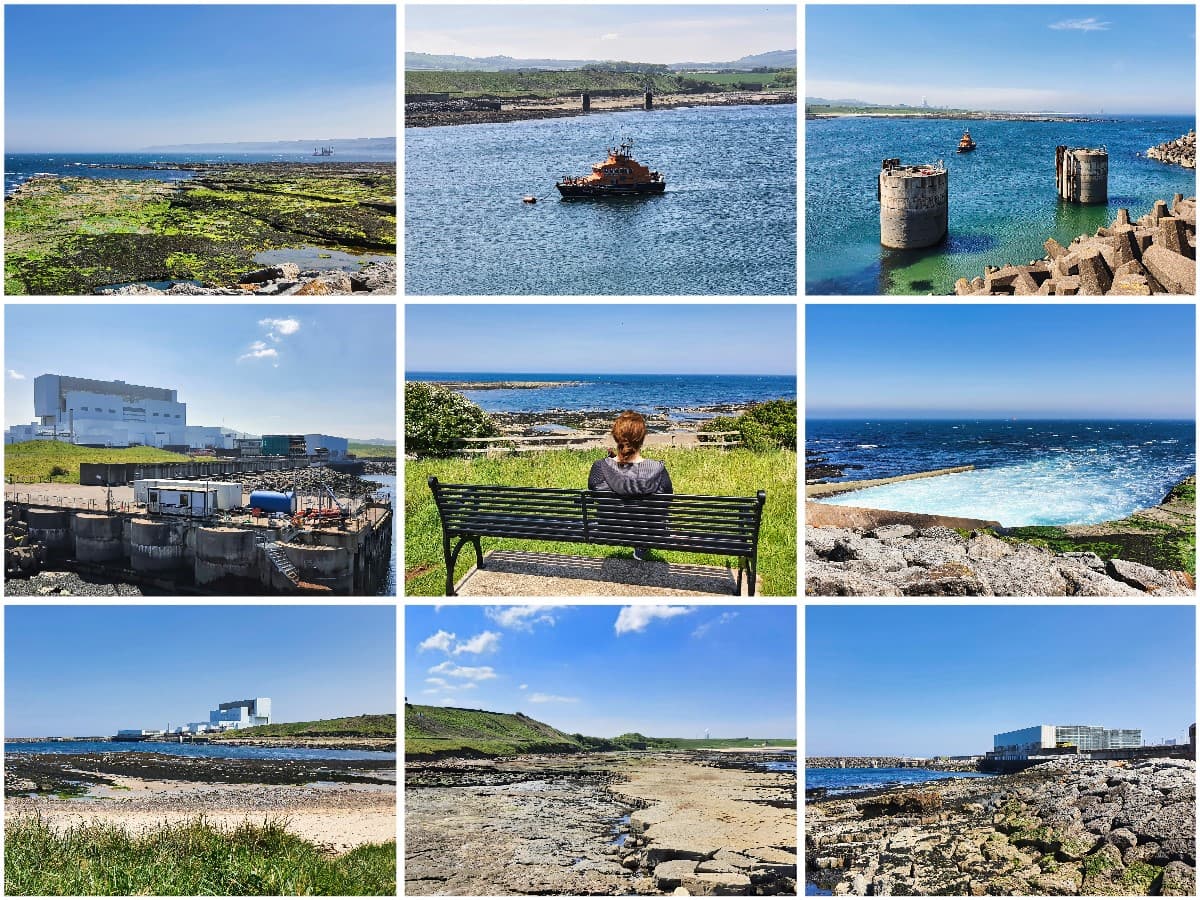
| Address: | Dunbar, EH42 1QS |
| Opening Hours: | NA |
| Admission Price: | NA |
| Parking: | Free parking at Thorntonloch Caravan Park (Dunbar, EH42 1QS), Barns Ness car park (Dunbar, EH42 1QP), and Whitesands car park (Innerwick, EH42 1QP). |
| Contact: | NA |
| Facilities: | Toilets at Skateraw Lime Kiln car park (Dunbar, EH42 1QR). Nearest shops and cafes are in Dunbar, 4 miles to the north. |
Overview
A nuclear power station might not seem like the perfect destination for a coastal walk, but Torness in East Lothian may just surprise you. The power plant that sits on the edge of Torness Point is one of the largest in Scotland, consisting of two second-generation gas-cooled reactors that use seawater in their operation, hence the power station’s location close to the shoreline.
East Lothian is renowned for its attractive coves and bays and the stretch of coastline past Dunbar heading south to Torness is an absolute stunner and is a must-visit for anyone that enjoys the salty tang of sea air and the sights and sounds of lapping waves.
Torness is just part of the walking trail that runs along this part of East Lothian between Dunbar and the Scottish Borders but it’s perhaps the highlight as not only is the enormous nuclear station quite a sight, but it’s situated between two very scenic beaches.
Getting to Torness Point is easy as it’s well-signposted 4 miles from Dunbar on the A1. For those visitors coming from Dunbar, the best option for parking is to look for the left-hand turn signed ‘Skateraw’ just before the junction of the power plant.
Head down this road for 3/4 mile and you’ll arrive at the Skateraw Lime Kiln car park, which has public toilets and picnic benches and is situated at the edge of a secluded bay, Chapel Point, which has a nice wee beach and is somewhat sheltered from the pummeling North Sea waves. It’s a great place for swimming, and on the various occasions I’ve visited, it has been exceptionally quiet, even in the height of summer.

Book Tours in Scotland
The Highlights
1: This is a surprisingly nice walk along a stunning stretch of East Lothian’s coastline. Combined with a free tour inside the power station it offers visitors a great afternoon’s entertainment for absolutely no cost.
2: The footpaths that continue past Torness power station run for miles and miles in both directions and are well worth exploring for anyone who wants a leisurely coastal walk. Cove, located 3 miles to the south (Cockburnspath, TD13 5XD), is perhaps the highlight thanks to its hidden-away harbour and its secluded golden-sand beach.
Visiting Tips
1: The historic Skateraw Lime Kiln is an interesting place that has a car park, picnic benches, and toilets. It’s probably the best place to begin a walk along this section of the coastline, but it’s also worth going because it has a secluded beach that locals hardly ever use.
3: Torness Power Station has an excellent visitor centre that explains the story of nuclear power in fascinating detail and also allows visitors to see the plant close up on free guided tours. Drop-in visitors are welcome, but tours have to be pre-booked. Phone the visitor centre (Telephone: 01368 873909) to arrange a booking.

Protect Your Family From Scotland's Biting Midges
- Powerful, reliable protection for up to 8 hours
- Water- and sweat resistant
- Repels midges, mosquitoes, horse flies, sand flies, fleas and ticks
- Safe for use on adults, children over 30 months and pregnant women
- Non-sticky, moisturising with a pleasant fragrance
- Packaging may vary
Tourist Information
Options for walking are obviously in one of two directions, the first being north past the Barns Ness lighthouse and around to Whitesand nature reserve which borders the Dunbar golf course and the Dunbar caravan site.
This walk is around 5 miles there and back but you can extend it by walking around the Whitesand Quarry lake which is managed by the RSPB and is a haven for breeding birds (definitely take binoculars).
As far as the path goes, it’s mostly rough grass, but towards Barns Ness and Whitesand, there’s a long section of tarmac that’s suitable for buggies and wheelchairs. There’s another car park at Whitesand that allows easy access to the beach, so it’s the best parking place for wheelchair users as there are grass tracks leading onto the beach that are relatively level and compacted.
The other direction from Torness Power Station heads south past Thorntonloch caravan park and along the dunes that border the 1-mile Thorntonloch Beach.
When the tide is out, you can follow the coastline pretty much all the way down to Cove Harbour which is a great walk but a wee bit tricky due to the rocks and boulders you’ll have to scramble across. Alternatively, there’s a footpath on the cliff edge that follows the coastline towards Cove, where you can (if you’re in the mood for a really long walk) join the Southern Upland Way.
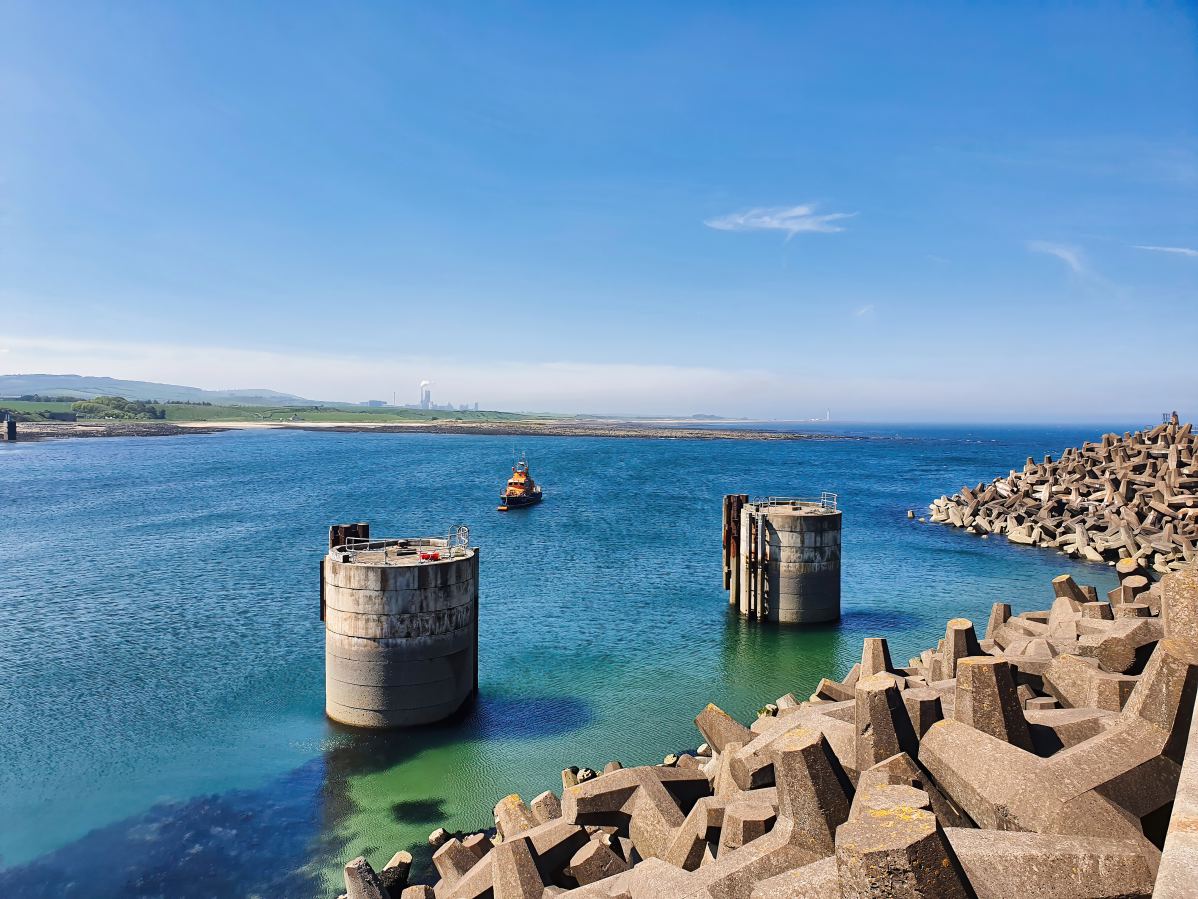
Things to Do
Power Station Tour: Join a free guided tour of Torness Power Station. It’s a unique chance to learn about nuclear energy production and witness the operation of a working nuclear power plant. The expert tour guides will provide fascinating insights into the daily workings of Torness.
Visitor Centre: Explore the Visitor Centre where you can engage with interactive exhibits related to nuclear power and its history. There are informative displays that break down complex scientific concepts into understandable tutorials, making it a great educational visit for all ages.
Wildlife Watching: The power station is located near a nature reserve which is a perfect spot for birdwatching and wildlife observation. The surrounding coastline is teeming with sea birds and marine mammals and you’ll likely spot seals, waders and gulls, and possibly even dolphins.
Scenic Walk: Enjoy a leisurely walk along the shore near the power station. The Scottish coastline provides breathtaking views and it’s an ideal place to unwind and enjoy the natural beauty of the area.
Photography: Capture the enormous Torness Power Station against the backdrop of the surrounding landscape. This combination of industrial marvel and natural beauty makes for some great photography opportunities.
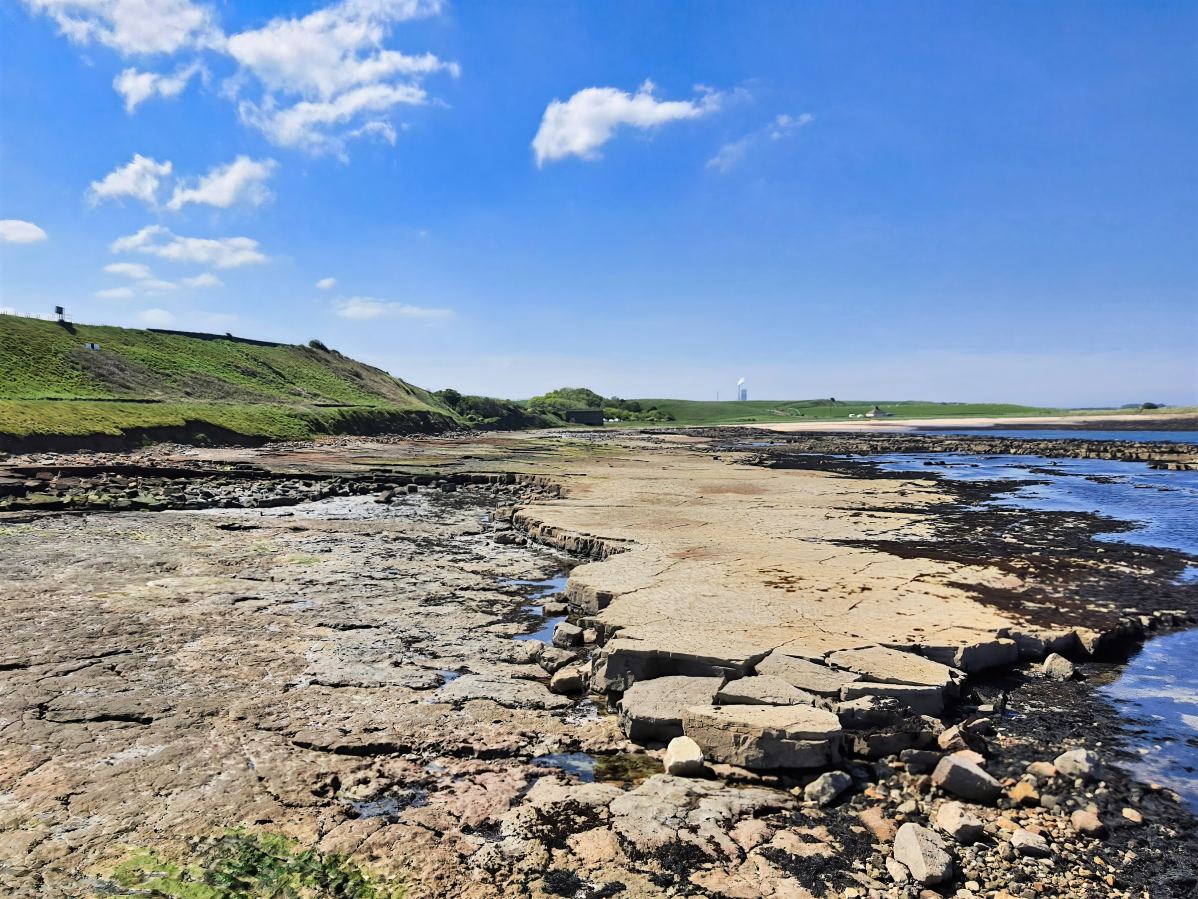
Book Tours in Scotland
Things to Do Nearby
Woodhall Dean Wildlife Reserve. Dunbar EH42 1SJ. 10-minute drive.
A nature reserve on the edge of the Lammermuir Hills in East Lothian. The reserve is home to sessile oak trees (a once-abundant tree that is now dwindling in numbers) and is highly regarded for the carpets of woodland wildflowers that bloom in spring.
St. Abbs Head. Eyemouth TD14 5QG. 24-minute drive.
A national nature reserve in a spectacular clifftop setting that’s famed for its seabird colonies. There’s a multitude of footpaths that offer walks throughout the reserve and there’s a small loch slightly inland that’s a haven for ducks, swans, and other wildlife.
Thorntonloch Beach. Dunbar EH42 1QS is a 2-minute walk.
A lengthy stretch of golden sand located immediately south of Torness power station. The shallow beach enjoys some of the best waves on the East Lothian coastline,making it a popular spot for windsurfers.
Whitesand Bay. Dunbar EH42 1QP. 10-minute drive.
A popular bay a few miles southeast of Dunbar that’s backed by the golden sands of Whitesand Beach and the greenery of Whitesand Nature Reserve. The reserve is alive with wildlife throughout the year, and visitors are almost guaranteed to see owls, wading birds, roe deer, red foxes, and many more animal species.
Fast Castle. Eyemouth TD14 5TY. 18-minute drive.
A ruined castle situated on a rocky headland a few miles north of St. Abbs Head. The castle isn’t much more than a collection of ramshackle walls but it’s a favourite spot for wildlife watchers thanks to the seal colonies that can be seen on the rocks below. In addition, clifftop footpaths allow visitors to enjoy some of the Scottish Borders’ most picturesque views.
Frequently Asked Questions
Is Torness power station still operational?
As of 2023, the Torness power plant in Dunbar, East Lothian, is still in operation. EDF Energy has stated that Torness, along with the Heysham 2 nuclear power plant in Lancashire, will shut down in March 2028 for defueling and eventual decommissioning.
The rating of Torness’s two state-of-the-art gas-cooled reactors is 1,364 MWe. Over 550 permanent EDF workers work at the power plant, and visitors can view interactive displays and take part in free tours of the facility at the visitor centre.
Is Torness power station safe?
The strict safety procedures built into today’s nuclear power facilities have earned them a reputation for being safe. However, the Office for Nuclear Regulation (ONR) has issued a warning that cracks at the Torness nuclear power plant might prevent the cooling of highly radioactive reactor fuel, prompting safety concerns.
What type of power station is at Torness?
The Torness power plant is a nuclear facility in East Lothian, Scotland, that uses two Advanced Gas-Cooled Reactors to generate electricity. The station first went live in 1988 and will be operational until the late 2020s.
What attractions are near the Torness power plant in East Lothian?
One popular attraction near Torness is the town of Dunbar which offers a variety of things to see and do including Dunbar Harbour and the John Muir Birthplace museum as well as beautiful beaches such as Belhaven Bay.
For those interested in outdoor activities the nearby Lammermuir Hills offer a range of hiking trails with stunning views of the surrounding countryside. Alternatively, visitors can take a leisurely stroll along the John Muir Way, a long-distance walking route that stretches from Dunbar to Helensburgh.
Protect Your Family From Scotland's Biting Midges
- Powerful, reliable protection for up to 8 hours
- Water- and sweat resistant
- Repels midges, mosquitoes, horse flies, sand flies, fleas and ticks
- Safe for use on adults, children over 30 months and pregnant women
- Non-sticky, moisturising with a pleasant fragrance
- Packaging may vary





